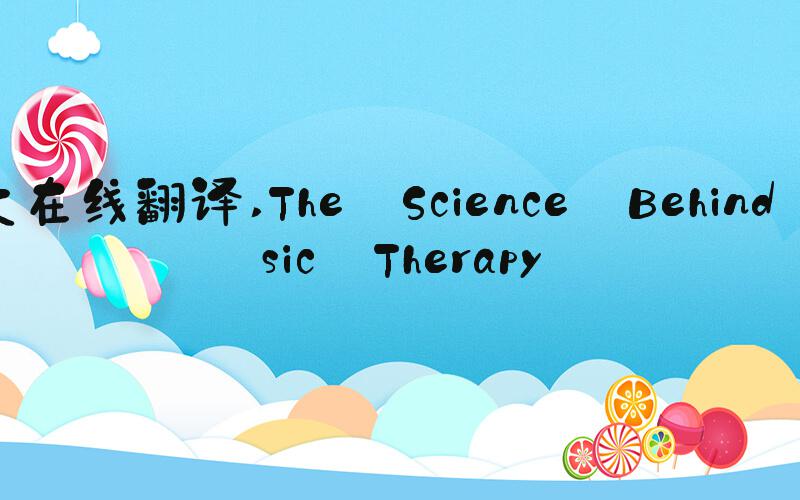
Music Therapy: The Healing Power of Sound
Introduction
Music has been used for centuries as a form of therapy, with the potential to heal both the body and mind. Music therapy is a professional and evidence-based practice that uses music to treat individuals with physical, emotional, cognitive, and social needs. Music therapy has shown positive effects on people with various conditions including autism, dementia, depression, anxiety, chronic pain, and cancer.
The Science Behind Music Therapy
Music therapy works by activating many areas of the brain at once, including those related to emotions, memory, and movement. Research has shown that listening to certain types of music can lower blood pressure and decrease heart rate, helping to reduce anxiety and stress. Additionally, music can stimulate the release of endorphins, the body's natural painkillers, leading to reduced perception of pain.
Applications of Music Therapy
Music therapy can be used in many different settings, including hospitals, schools, nursing homes, and community centers. In hospitals, music therapy can be used to aid in the recovery process for patients with various medical conditions. Music therapy can also be used in schools for children with special needs, providing them with an alternative form of expression and communication. Elderly individuals in nursing homes can benefit from music therapy as it can improve their mood, decrease agitation, and even improve their cognitive function.
Types of Music Therapy Interventions
The types of music therapy interventions used vary depending on the individual's needs. Active music therapy interventions involve the individual actively playing or singing music. Passive interventions involve listening to pre-recorded or live music. Another type of intervention is known as receptive music therapy, where the individual listens to music and reflects on the emotions and memories that arise while listening.
Music Therapy in the Future
As research on music therapy continues to grow, it is becoming more recognized as an effective form of treatment. In the future, it is possible that music therapy will become more widely available and accepted as a complementary treatment option. With the advancement of technology, music therapy can be easily accessed from anywhere, making it a more convenient option for those who need it.
Conclusion
Music therapy is a powerful and evidence-based practice that can be used to help individuals with a wide range of conditions. It works by activating many areas of the brain at once, leading to positive effects on physical, emotional, cognitive, and social needs. As research on music therapy continues to grow, it is likely that it will become more widely accepted and available, making it a convenient option for those who could benefit from its healing power.
介绍
音乐作为一种治疗方式已经使用了数百年,具有治愈身体和心灵的潜力。音乐疗法是一种专业和基于证据的实践,使用音乐治疗身体、情感、认知和社交需要的个体。音乐疗法已经显示出对各种疾病有积极的影响,包括自闭症、痴呆、抑郁症、焦虑症、慢性疼痛和癌症。
音乐疗法背后的科学
音乐疗法通过同时激活大脑的许多区域,包括与情绪、记忆和运动相关的区域,起作用。研究表明,听某些类型的音乐可以降低血压和心率,有助于减少焦虑和压力。此外,音乐可以刺激内啡肽的释放,这是身体的天然止痛剂,导致疼痛感知的减少。
音乐疗法的应用
音乐疗法可以在许多不同的环境中使用,包括医院、学校、养老院和社区中心。在医院中,音乐疗法可用于帮助各种医疗状况的患者康复。对于特殊需求的儿童,音乐疗法也可以在学校中使用,为他们提供另一种表达和交流的方式。养老院中的老年人也可以从音乐疗法中获益,因为它可以改善他们的情绪,减少他们的烦躁,甚至改善他们的认知功能。
音乐疗法干预的类型
使用的音乐疗法干预的类型取决于个人的需求。积极的音乐疗法干预涉及个人积极地演奏或唱歌。被动的干预涉及听预先录制的或现场演奏的音乐。另一种干预称为接受性音乐疗法,个体听音乐时会反思产生的情感和记忆。
未来的音乐疗法
随着对音乐疗法的研究不断增长,它越来越被认为是一种有效的治疗方式。在未来,音乐疗法有可能成为更广泛可用和被接受的补充治疗选择。随着技术的进步,音乐疗法可以从任何地方轻松访问,这使它成为那些需要的人更方便的选择。
结论
音乐疗法是一种强大的、基于证据的实践,可以用来帮助各种疾病的人。它通过同时激活大脑的许多区域,并对身体、情感、认知和社交需要产生积极影响。随着对音乐疗法的研究不断增长,它有可能变得更加被接受和可用,让需要从其治疗力中受益的人更方便地获得治疗。

暂无评论
发表评论